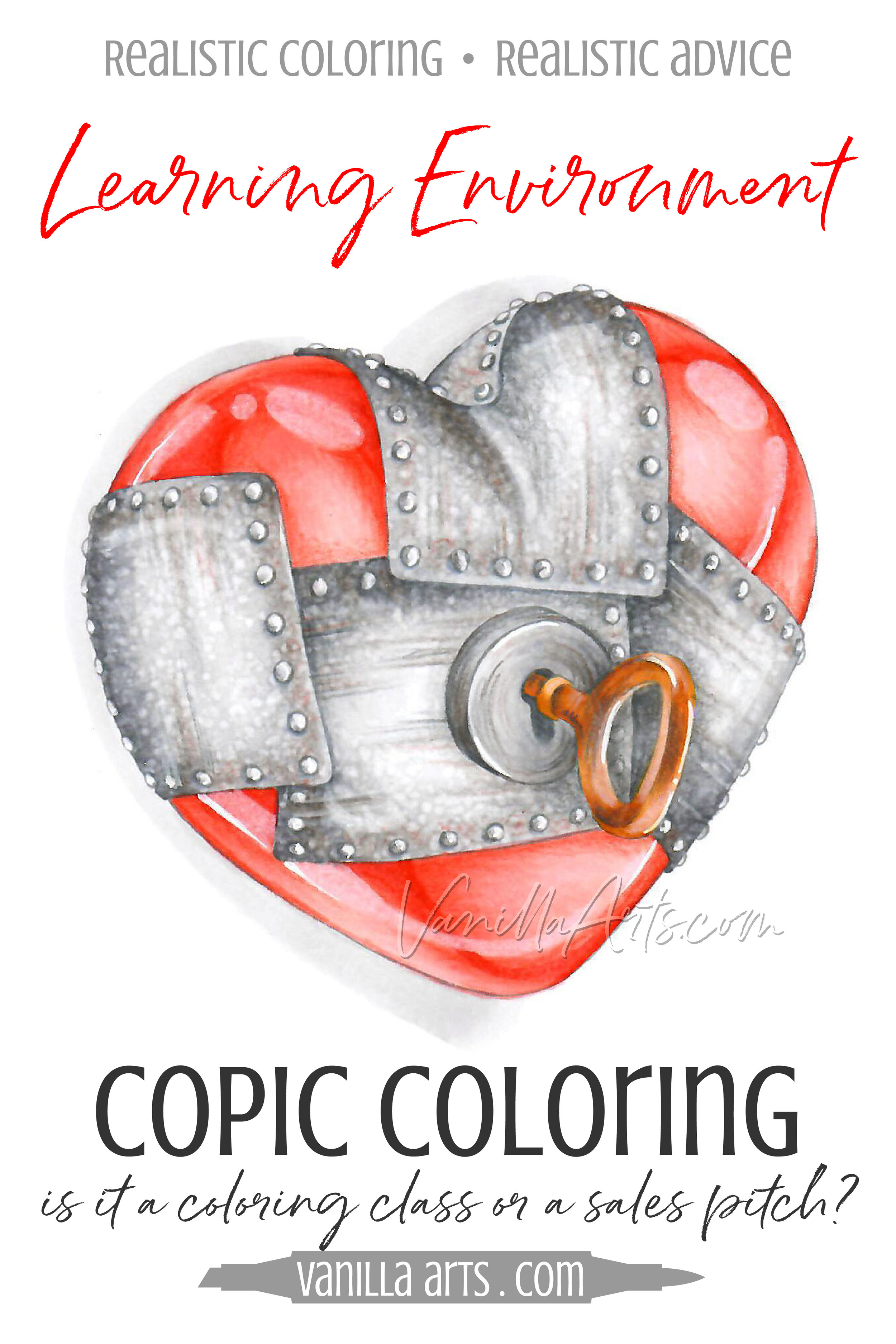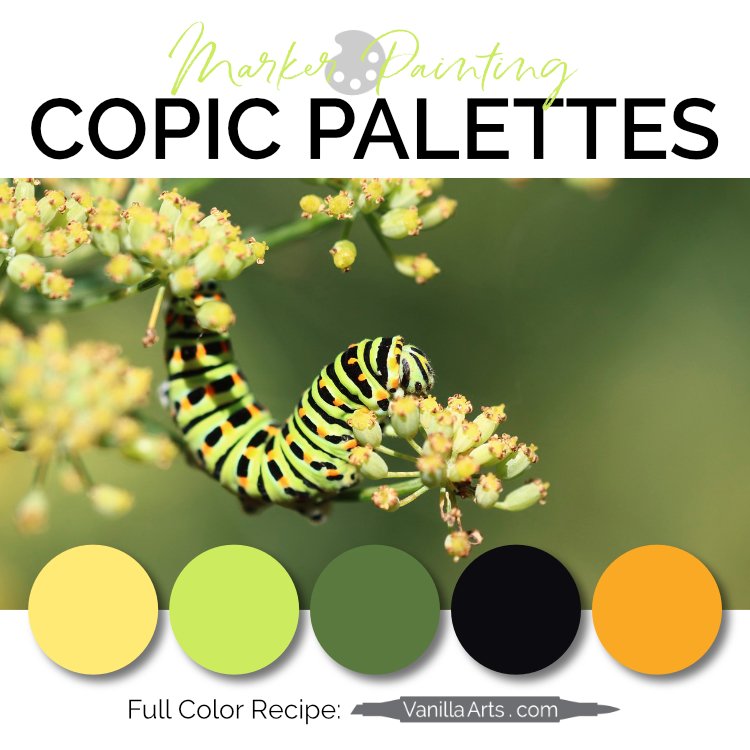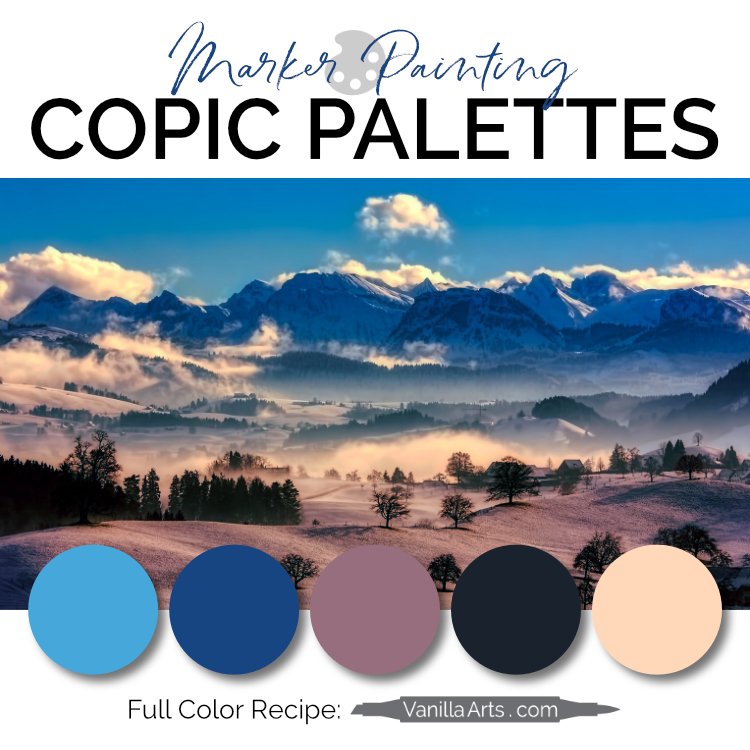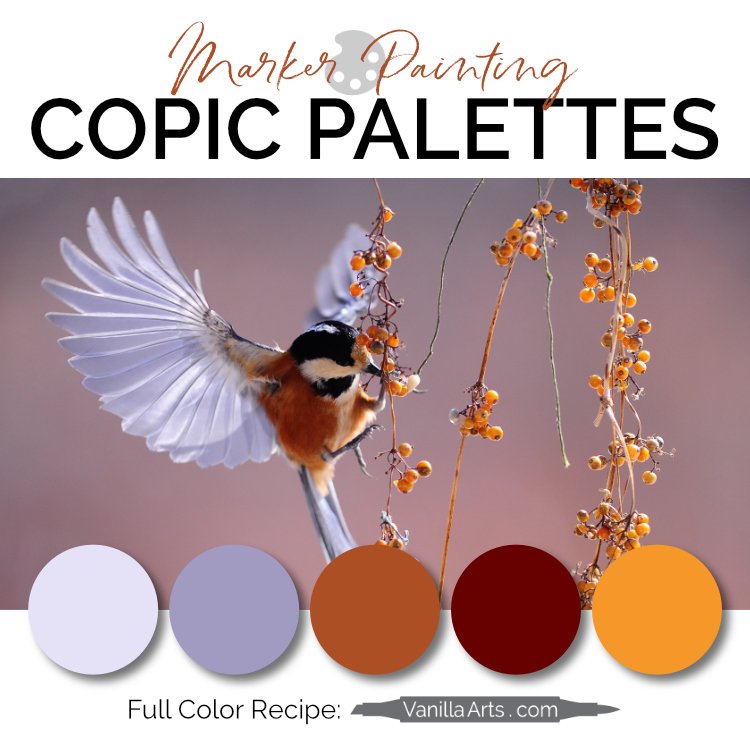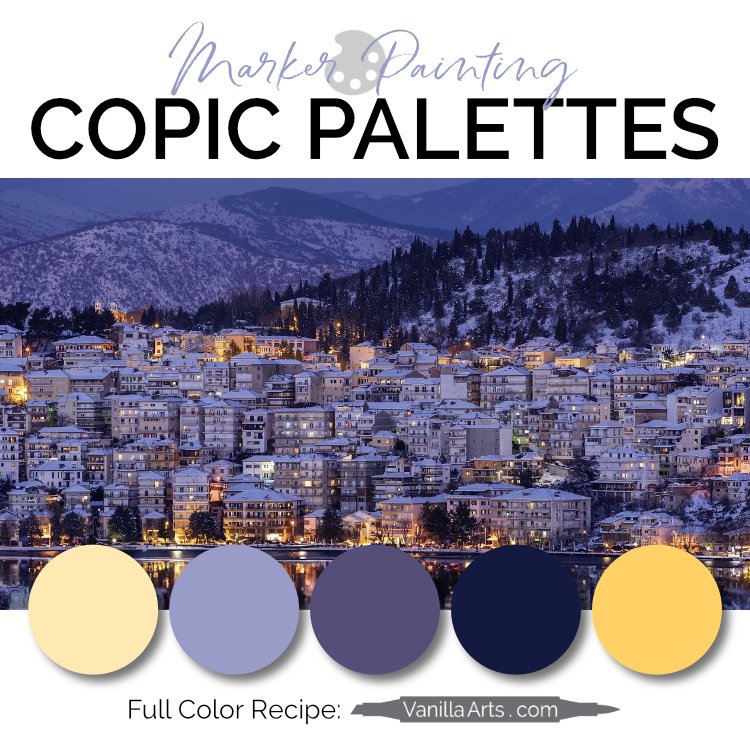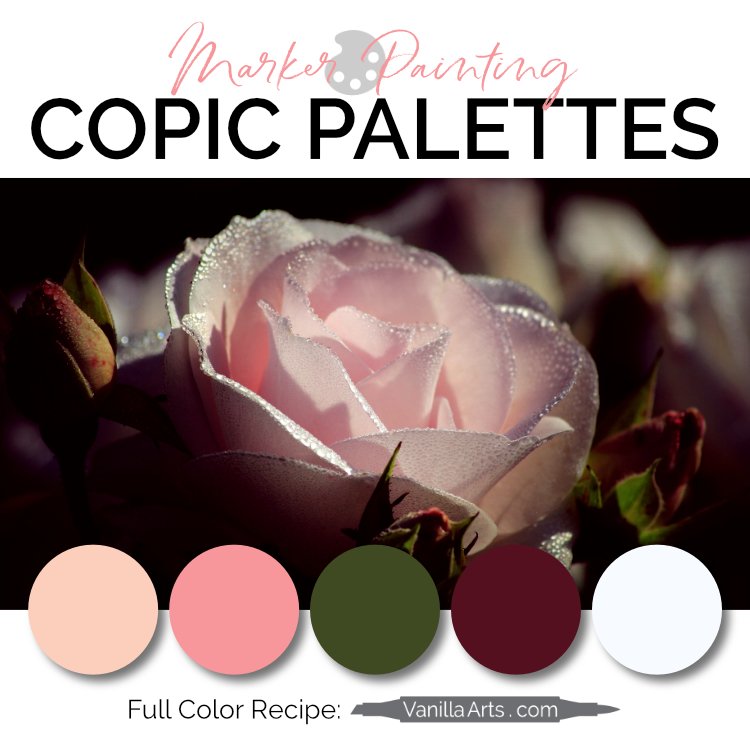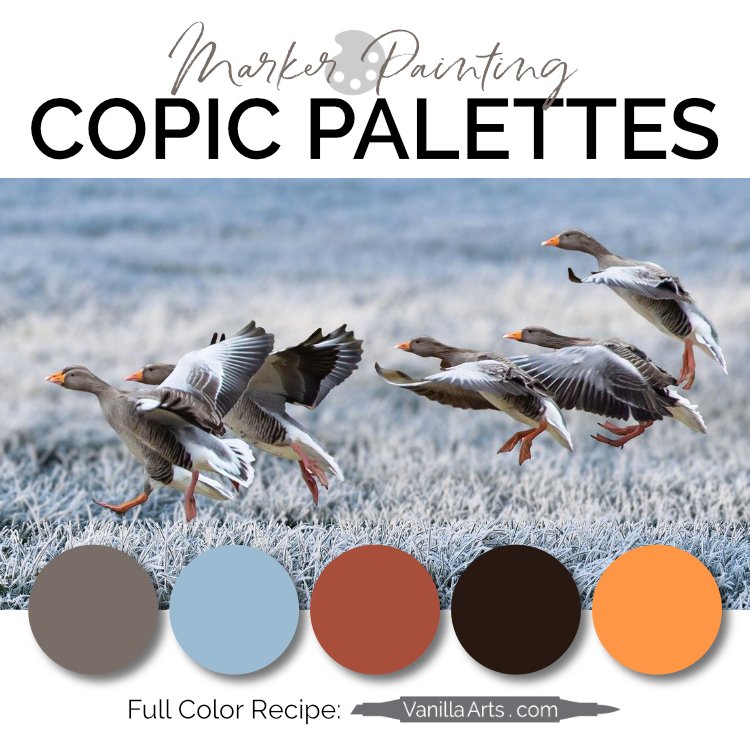Gee, There are a lot of Copic Marker Coloring Classes Right Now...
You’re taking it smart and slow…
You did not jump into Copic Markers blindly.
You read the blogs. You researched colors, paper, and storage. And you did all that before you made the big purchase.
Now you're reading every tip and tutorial you can get your hands on. You're watching videos and printing step-by-step guides-- you are eager to learn!
And yet everything you color still looks a little... well... childish?
So you upped your game. You took classes at a local shop or you purchased an online course from your favorite blogger.
And sure, you made some nice projects, met great people, and had a little fun with colorless blender. But when you're sitting by yourself at the kitchen table, just you and that notebook full of blending recipes and printed tutorials... you still feel lost.
You don't know where to put the shadows, where to put the highlights, or even which colors to use.
Feeling doomed to a lifetime of copy-cat coloring?
You are not alone. Most Copic colorers only color well when they're sitting in a classroom or watching a demonstration video.
But once you’re on your own? Meh.
The problem is not you, it's the coloring education system (or the lack thereof).
Anyone can call themselves an instructor. I see it a lot; someone posts a decent looking project on Instagram or Facebook and at least one person will comment, "Hey, you should teach!!!!"
And so some of them take that literally.
Now before I get anyone’s feathers all a’fluffle, I’m not pointing the finger. I’m not trying to insult anyone.
But there is a growing problem right now in markerworld.
There are a lot of people giving classes, a lot of people setting themselves up as education resources…
Sigh. I’m having trouble saying what I want to say.
Let’s try it this way…
There is a GIGANTIC difference between being a good colorer and knowing how to teach.
The glut of self proclaimed Copic experts has real life consequences for folks shelling out hard earned cash. People are spending a lot of money, not just on classes but on the required supplies for each class.
And a lot of students are paying for classes that really only lead to needing more classes.
Many coloring classes are basically show-and-tell sessions. They're not teaching, they're demonstrating.
Students can only get so far watching demonstrations.
Eventually you hit a brick wall, when you've seen it all and yet you understand nothing.
So if you’re someone who just likes to color and spend time with other people who like to color… well that’s one thing. If that’s you, no problem. Stop reading right now because you’re in a class for the atmosphere and you already know if you’re in the right class.
But some of you want more
You want to learn and grow. The rest of this article is for those of you who are frustrated over classes you’ve taken before. You don’t want to get burned again.
Read onward if you’re one of those hopeful colorers who wants more than what they’re currently getting.
Because you want to learn and grow, you need more than social coloring sessions. You need a teacher who knows how to teach.
So how do you find a good instructional class?
What should you look for in a good teacher?
That’s a loaded question.
You can’t tell the good'uns from the bad'uns going by Copic Certification because right now, anyone can get certified. All certification says is that someone paid for the official class and they sat in a conference room for a few hours.
There is no minimum skill qualification to become Copic certified. Everyone who comes in, leaves with a certificate in their hand.
So the question remains, how can you tell if your instructor is a teacher or a just demonstrator?
Here's my suggestion:
Ask the instructor for the lesson plan.
A simple question, right?
What is the goal of this class?
“I’m here to show you how to color this “Happy Heart Balloons” image from The Happy Heart Stamp Company!”
That’s a demonstrator.
Or maybe the goal is to teach you how to use a colorless blender to create heart highlights. Or they’re showing you how a special red heart marker recipe.
That’s a little different than what a teaching-teacher who wants you to learn would say.
Teachers have specific lesson plans.
“Today, we’re learning to add subtle warmth to metals.”
“Today we’re looking at how highlights change from matte to shiny surfaces…”
“Today’s lesson is an introduction to layering objects for depth."
Notice the difference?
The demonstrator is showing you how they colored one stamp.
The instructor shows you how to handle a condition or a situation.
A demonstration is good for a single stamp. If you're intuitive, maybe you can apply that lesson to a few stamps that are similar. But if you want to color other things, you have to sign up for other classes.
True instruction is good for more than just a stamp. Real lessons are applicable to the wider world. And if you’ve got a really good teacher, you can apply your new knowledge to more than just markers. Good concepts and real technique will translate to colored pencil, or watercolor pens, or mixed media collage, or heck… it might even work with real paint.
Look, I know finding a great teacher is tough
You may live in a remote area. But actually, population doesn’t have much to do with it. There are large metropolitan areas that don’t have a teaching art store or good paper crafting shops.
Some stores rely on demonstrators to push product sales. And hoo, boy! A focus on sales certainly decreases the odds that the store is employing a good teacher.
So I get it, live classes might be impossible to find where you live.
And the internet?
Well, that’s like shootin’ it out at the O.K. Corral, and dad-gum’it! You’re blindfolded too!
If the course is hidden behind a paywall, how can you tell that there’s real instruction and lesson planning at work?
All I can say is: ask.
For live classes and for online courses. You are allowed to ask.
If the answer to your question is not provided in the course description, then ask the instructor directly.
I’m more than happy to give potential students more info. That’s part of the job.
No answer? Don’t like the answer? Don’t take the class.
I’ll even tell people when they’re not right for one of my classes.
And don’t make the mistake of thinking that I’m unique!
All good instructors want to create a great learning environment. Selling you a class that you don’t need or aren’t ready for defeats our personal mission.
Sure, I want to earn money, but popping you into a class that you’re not ready for? Well, that makes your money the hardest money I’ve ever earned. It’s sooooooo difficult to teach someone all the skills they’re missing PLUS help them keep up with the rest of the class. Good instructors want you in the right class for your skill level.
Lesson plans, class goals, and upfront honest discussion
Those are three signs that you’re dealing with someone who wants to help you learn.
It’s okay to ask questions before you take your next class.
It’s not just your money you’re saving, it’s frustration too.
Ask. You are worth it!




